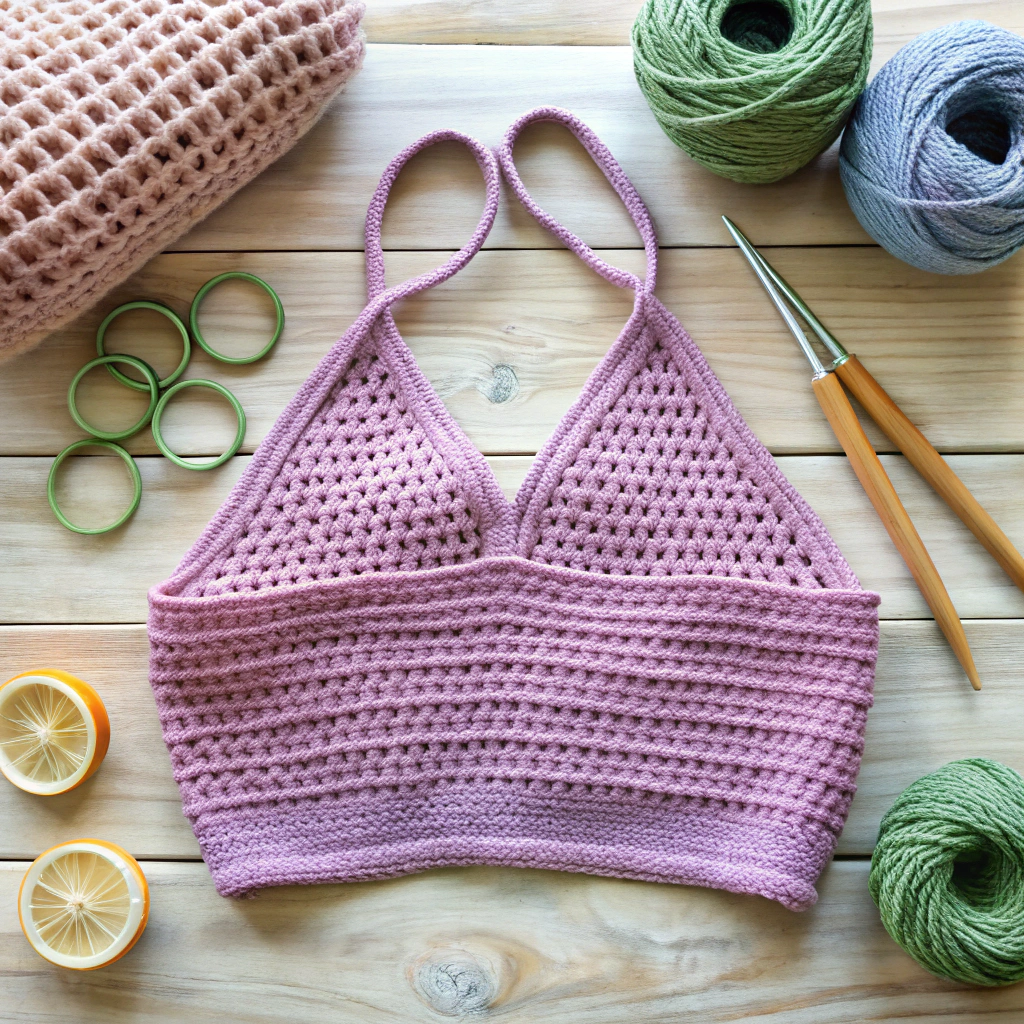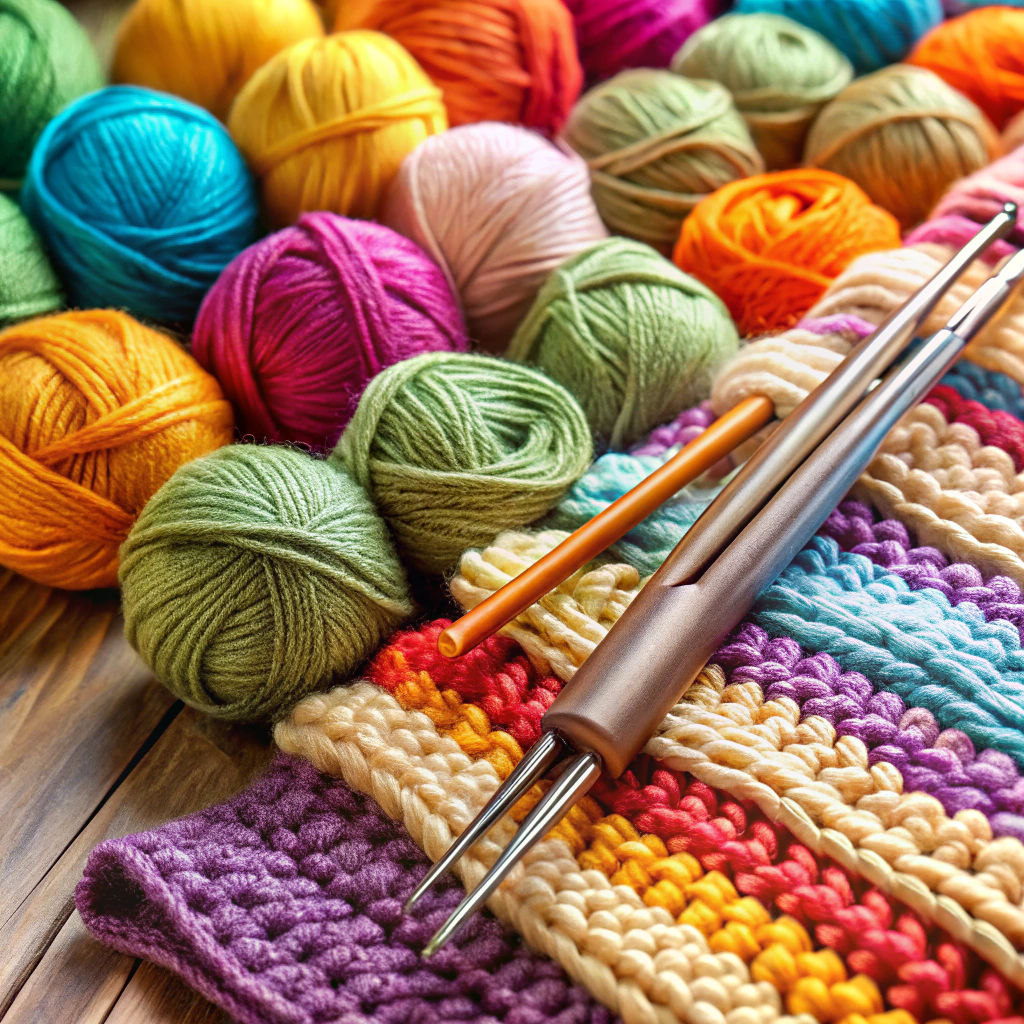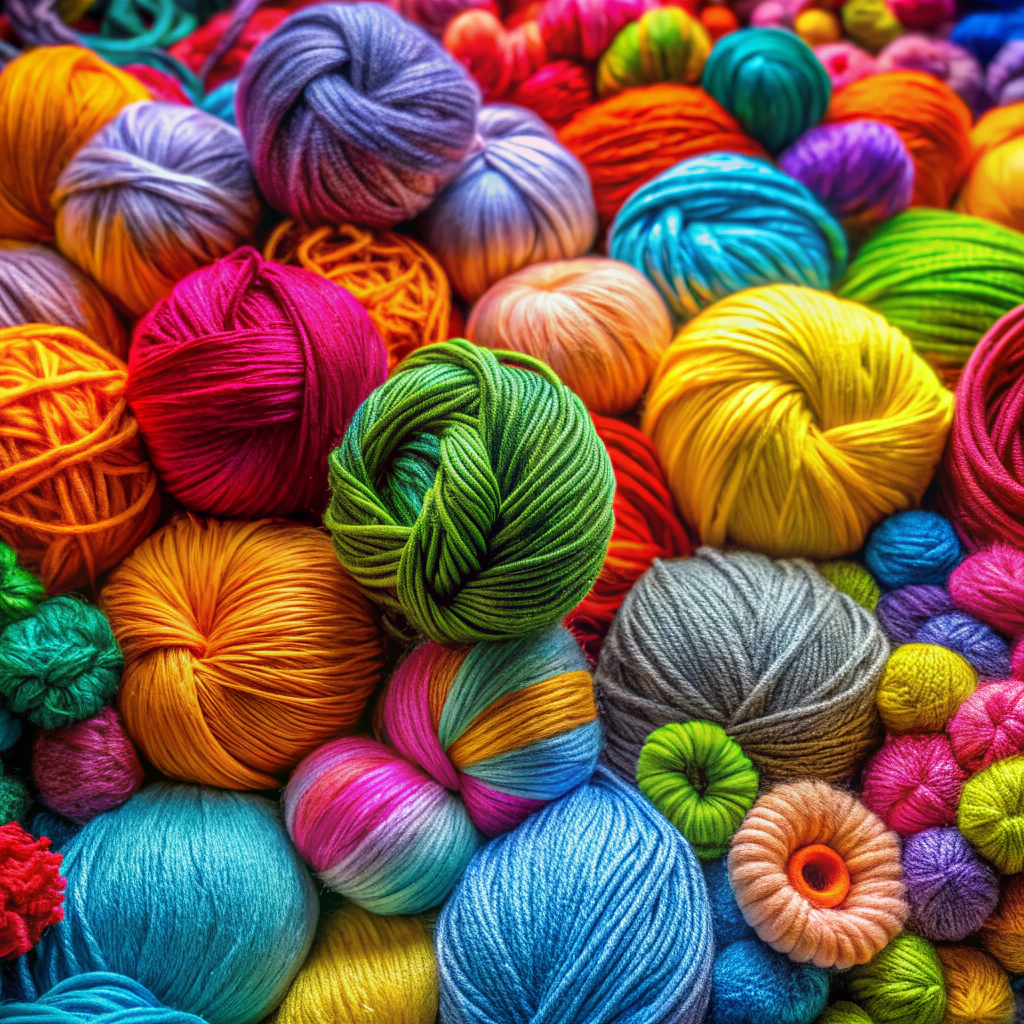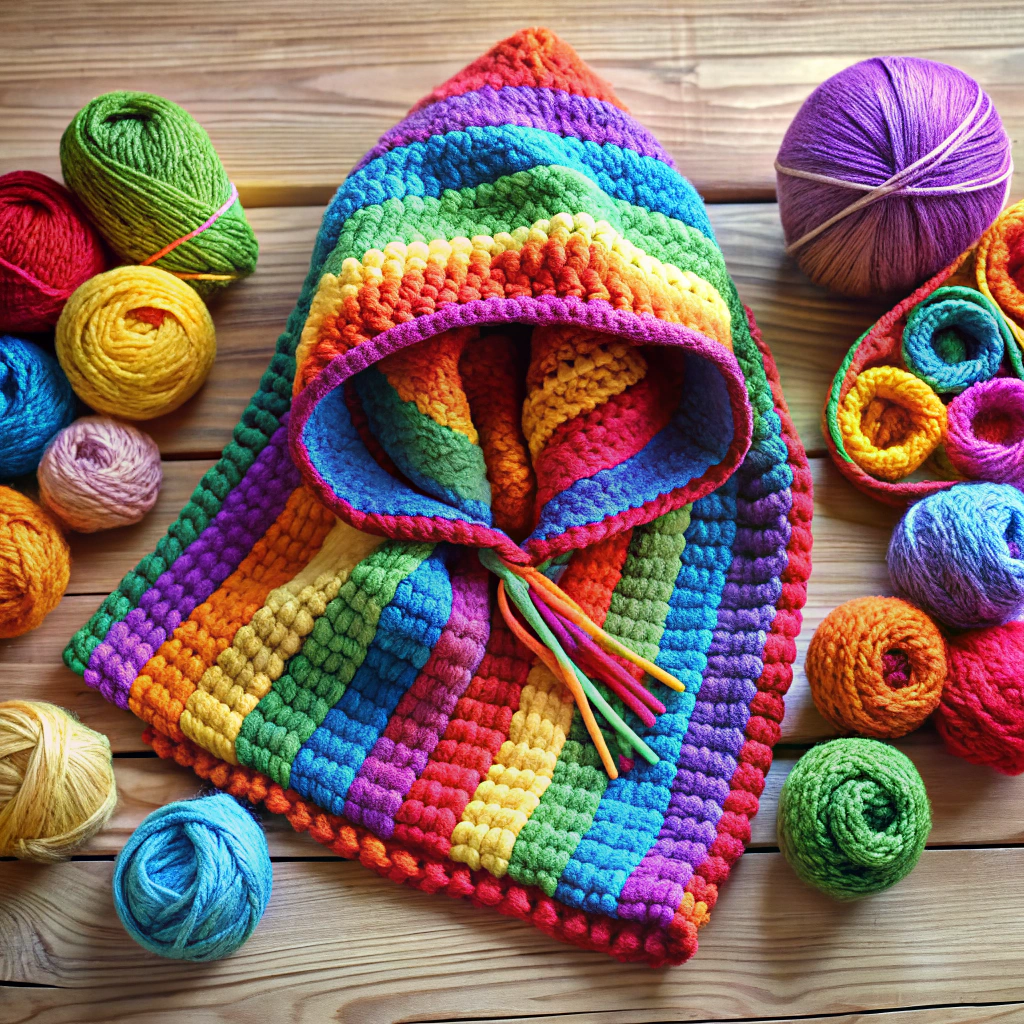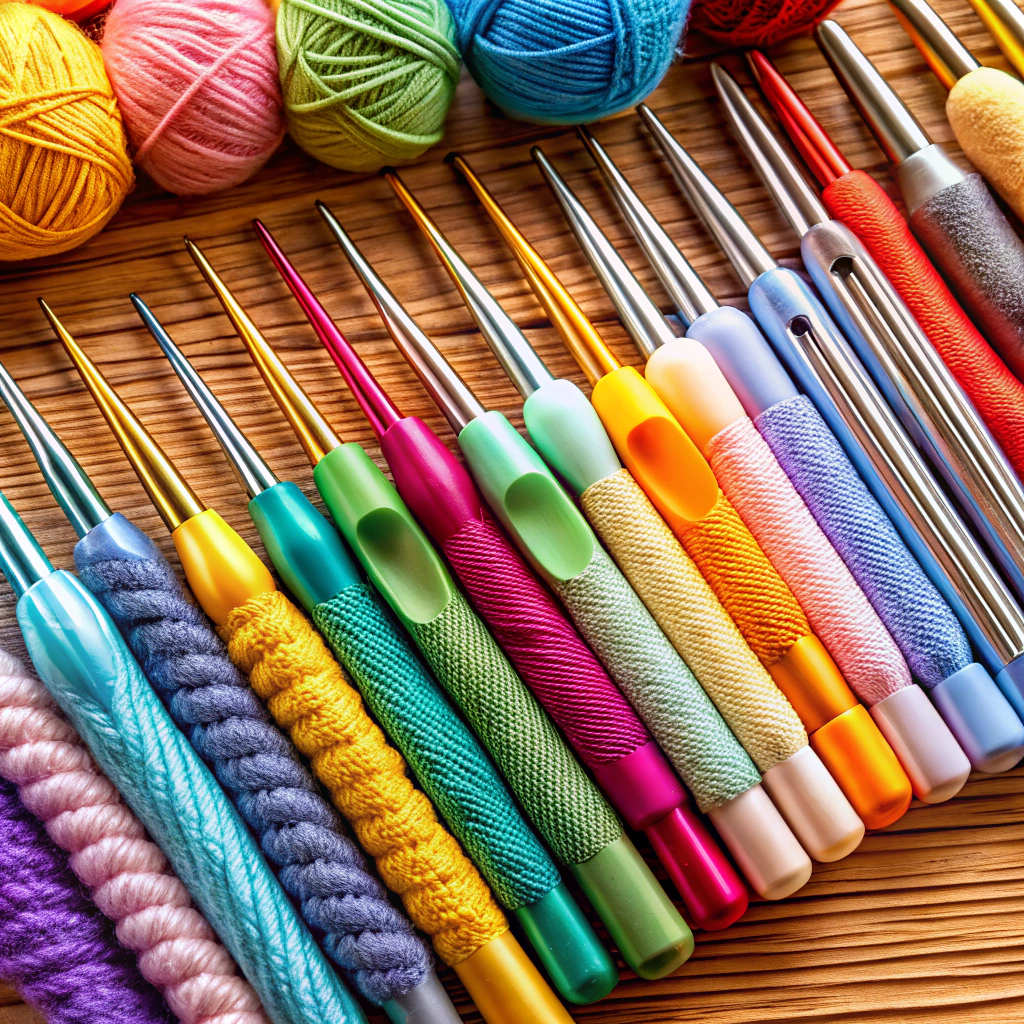Discover the various types of filet crochet as we dive into the intricate world of this fascinating needlework technique, perfect for crafting enthusiasts and beginners alike.
Crocheting is an art that has been around for centuries, and it continues to evolve with time. One of the popular crochet techniques is filet crochet, which involves creating a mesh-like fabric by working with open and filled spaces.
This technique can be used to create beautiful designs ranging from simple geometric shapes to intricate lace patterns. In this article, we will explore the different types of filet crochet and how they are used in various projects.
Whether you are a beginner or an experienced crocheter, this guide will help you expand your knowledge and skills in filet crochet. So grab your hook, yarn, and let’s dive into the world of filet crochet!
Introduction to Filet Crochet
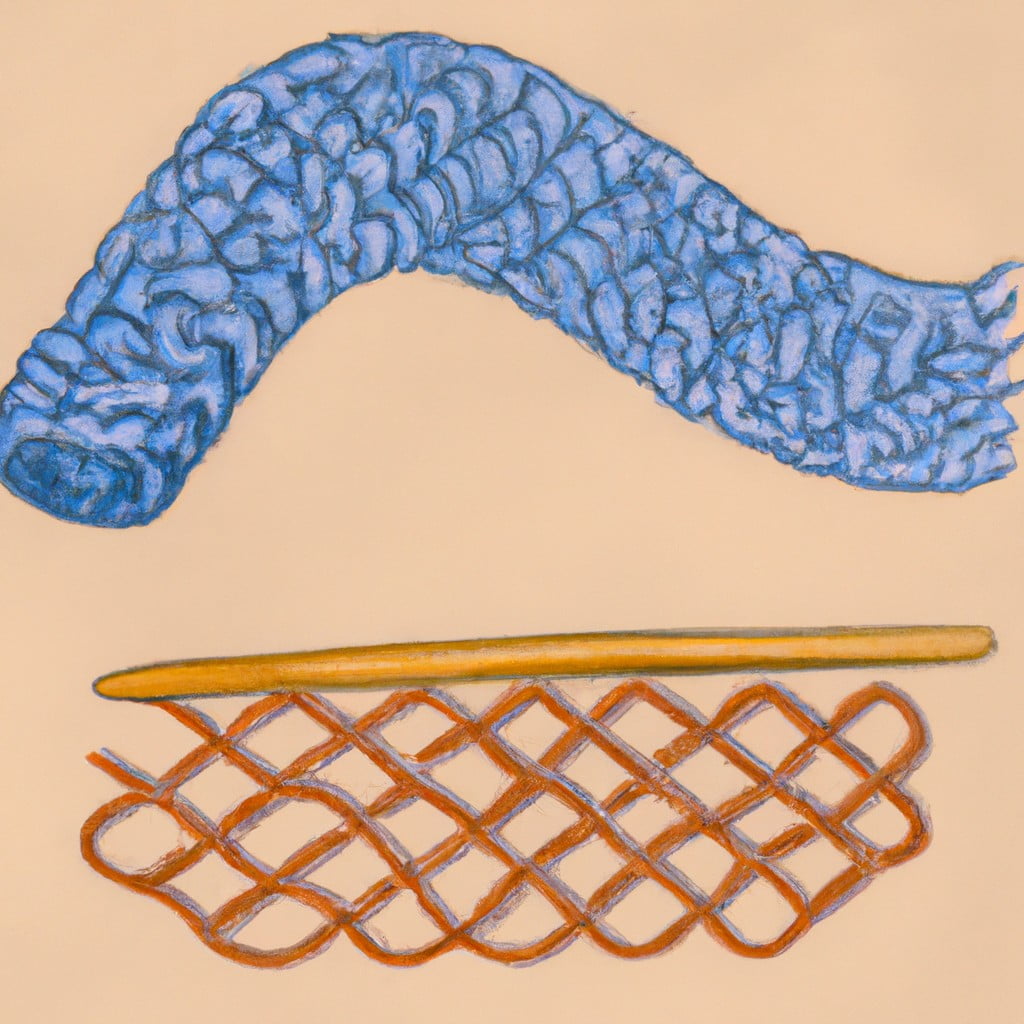
Filet crochet is a technique that has been around for over a century and continues to be popular among crocheters of all skill levels. It involves creating an open mesh fabric by working with filled and unfilled spaces, which can be used to create intricate designs ranging from simple geometric shapes to complex lace patterns.
The beauty of filet crochet lies in its versatility; it can be used for various projects such as clothing, accessories, home decor items, baby blankets and more.
One of the reasons why filet crochet is so appealing is because it’s relatively easy to learn compared with other types of needlework techniques. Even if you’re new to crocheting or have never tried this technique before, you’ll find that learning the basics isn’t too difficult.
Filet Crochet Materials
The most important material you will need is yarn. Filet crochet can be done with any type of yarn, but choosing the right one depends on your project’s purpose and desired outcome.
For beginners, it’s best to start with a medium-weight or worsted weight cotton yarn as they are easy to work with and create well-defined stitches. Cotton also has excellent durability properties that make it ideal for items that require frequent washing such as dishcloths or baby blankets.
The hook size you choose should match your chosen yarn weight; otherwise, your finished product may not turn out correctly in terms of size or texture. A general rule of thumb is that thicker threads require larger hooks while thinner threads need smaller hooks.
In addition to these basic materials, other tools like stitch markers and tapestry needles come in handy when working on more complex patterns.
Choosing the Right Yarn and Hook for Filet Crochet
The type of yarn you choose will affect the drape, texture, and overall appearance of your project. For filet crochet projects with a delicate lace-like look, use a lightweight cotton or bamboo thread in size 10 or smaller.
If you prefer a more substantial fabric with better coverage and warmth, opt for thicker yarns such as sport weight or worsted weight.
The hook size also plays an essential role in determining how your finished project will look like. A smaller hook creates tighter stitches that result in finer details while larger hooks produce looser stitches that create bigger spaces between mesh blocks.
It’s important to note that different brands of yarn may have slightly different thicknesses even if they are labeled under the same category (e.g., worsted weight). Therefore it’s always recommended to check gauge before starting any new project by making swatches using various hooks sizes until you achieve the desired tension.
Basic Filet Crochet Stitches
The two fundamental stitches in filet crochet are chain stitch and double crochet stitch. These two simple stitches create a mesh-like fabric that can be manipulated to form various designs.
The chain stitch is the foundation of any crocheted piece, including filet crochet. It creates an even row of loops that serve as a base for other stitches.
In filet crochet, chains are often used to create spaces or gaps between filled blocks.
Double Crochet Stitch is another crucial element in Filet Crochet; it forms solid blocks on top of chains and helps fill up space within patterns created by open meshes formed by chains. Once you have mastered these basic techniques, you can move on to more complex ones like treble crochets or picots which will help add texture and depth into your work.
Types of Filet Crochet Stitches
There are different types of filet crochet stitches, each with its unique characteristics and uses. The most common type of stitch used in filet crochet is the double crochet stitch, which creates a solid block or filled space on the mesh fabric.
Another popular stitch is the chain stitch, which creates an open space or empty square on the mesh fabric.
Other types of filet crochet stitches include treble crochets, half-double crochets, slip stitches and more complex combinations like clusters or shells. These advanced techniques can be used to create intricate lace-like designs that add texture and depth to your projects.
When working with different types of filet crochet stitches it’s important to keep track of your pattern chart as well as counting carefully so you don’t miss any spaces or blocks along the way.
Basic Techniques in Filet Crochet
One such technique is working with multiple colors in your filet crochet project. This can be done by using different colored yarns for each row or section of your pattern.
Another important technique in filet crochet is increasing and decreasing stitches. These techniques are used to create shaping within a pattern, allowing you to make curves and other shapes that would otherwise be impossible with straight lines.
Understanding how to work with charts is essential for any serious crocheter who wants to take their skills up a notch. Filet crochet charts are visual representations of patterns that show where open spaces (or “mesh”) should be created versus filled-in spaces (or “blocks”).
By learning how these charts work and practicing reading them correctly, you’ll soon find yourself creating intricate designs like a pro!
Understanding Filet Crochet Charts
These charts use symbols and colors to represent the open and filled spaces in a filet crochet pattern. Understanding how to read these charts is crucial if you want your project to turn out as intended.
The first step in understanding filet crochet charts is familiarizing yourself with the symbols used on them. The most common symbol used in these types of patterns is a square, which represents a filled space or block stitch.
An empty square, on the other hand, represents an open space or chain stitch.
Other symbols that may appear on filet crochet charts include diagonal lines (representing slanting stitches), dots (used for lacet stitches), X’s (for crossed double crochets) and more.
Once you have mastered reading these basic chart elements, it’s time to move onto more complex ones such as repeats and color changes within one row of stitching.
Creating and Reading Filet Crochet Patterns
Each square on the chart corresponds to one stitch, either an open mesh or filled block. The pattern is read from right to left, starting at the bottom right corner of the chart.
To create your own filet crochet pattern, you will need to decide on your design and then draw it out onto graph paper. Each square on the graph paper represents one stitch in your finished project.
When creating a filet crochet pattern, keep in mind that each row should have an even number of squares so that you can maintain symmetry throughout your work. You may also want to consider using different colors for open meshes and filled blocks so that it’s easier for you to follow along as you work.
Reading a filet crochet pattern can be intimidating at first but with practice becomes second nature. Start by identifying any repeats within each row of stitches; this will help simplify things as well as make sure everything lines up correctly when working across multiple rows.
Popular Filet Crochet Designs and Motifs
Some of the most popular filet crochet designs include geometric shapes, floral patterns, and text or lettering. Geometric shapes such as squares, triangles, diamonds are easy to create using basic filet crochet stitches.
These simple yet elegant patterns are perfect for creating blankets or table runners.
Floral patterns in filet crochet add a touch of elegance and beauty to any project. Roses, daisies, sunflowers are some of the popular floral motifs used in this technique.
The delicate lace-like texture created by open spaces adds an extra dimension to these beautiful flowers.
Text or lettering is another popular design element in filet crochet projects like wall hangings with inspirational quotes or personalized gifts with names on them.
Geometric Filet Crochet Patterns
They are simple yet elegant and can be used to create a wide range of projects, from table runners to blankets and even clothing items. Geometric filet crochet patterns typically feature shapes such as squares, triangles, circles or diamonds arranged in a repeating pattern.
To create geometric filet crochet patterns, you will need to have a good understanding of basic stitches such as chain stitch (ch), double crochet (dc) and treble stitch (tr). You will also need graph paper or software that allows you to design your own charts.
Some examples of geometric filet crochet patterns include checkerboard designs made up of alternating filled-in squares; diamond-shaped motifs arranged diagonally across the fabric; zigzag lines created by alternating open spaces with filled-in blocks; concentric circles formed by gradually increasing the number of filled-in spaces around an empty center space.
Whether you prefer bold graphic prints or more subtle minimalist designs, there is no limit when it comes to creating beautiful geometric shapes using this versatile technique.
Floral Filet Crochet Patterns
These patterns feature beautiful flowers and leaves, which can be used to create stunning home decor items such as table runners, curtains, and wall hangings. The delicate nature of these floral designs makes them perfect for adding a touch of elegance to any room.
When it comes to creating floral filet crochet patterns, there are endless possibilities. You can choose from a variety of flower types such as roses, daisies or lilies and combine them with different leaf shapes like ferns or ivy leaves.
Some designers even incorporate butterflies or birds into their floral motifs for added interest.
One thing that sets apart the creation process for these intricate designs is that they require careful attention to detail when following charts since each stitch represents either an open space (usually represented by chain stitches) or filled spaces (usually represented by double crochets). This means you need to pay close attention while working on your project so you don’t miss any stitches along the way.
Filet Crochet Patterns With Text and Letters
You can create beautiful designs that feature names, quotes, or even song lyrics. These patterns require some planning and attention to detail but the results are worth it.
To create a filet crochet pattern with text or letters, you will need to first choose the font style you want to use. There are many free online resources where you can find different fonts that work well for filet crochet.
Once you have chosen your font style, it’s time to plan out your design on graph paper. Each square on the graph paper represents one stitch in filet crochet so make sure each letter is spaced out correctly and fits within the overall design of your project.
When working on a pattern with text or letters in filet crochet, it’s important to pay close attention as mistakes can be difficult to fix once made due its mesh-like structure.
Square Filet Crochet Grids
They are perfect for creating beautiful and intricate designs, ranging from simple geometric shapes to more complex lace patterns. Square grids can be used to create a wide range of projects such as blankets, table runners, placemats, and even clothing items like scarves or shawls.
To get started with square filet crochet grids, you will need to choose your yarn and hook size based on the desired finished project size. Once you have your materials ready, it’s time to start working on the grid pattern using basic filet crochet stitches such as chain stitch (ch), double crochet (dc), and treble crochet (tr).
One important thing to keep in mind when working with square filet crochets is that each block represents two stitches – an open space followed by a filled space or vice versa depending on the design chart.
Rectangular Filet Crochet Grids
These grids can be used to create a wide range of designs, from simple stripes and checks to more intricate lace patterns. The rectangular shape allows for greater flexibility in terms of size and dimensions, making it perfect for creating larger projects such as blankets or tablecloths.
To create a rectangular filet crochet grid, you will need to start with a foundation chain that is an even number plus two chains (for turning). From there, you will work the first row using double crochet stitches before beginning the mesh pattern on subsequent rows.
One advantage of working with rectangular grids is that they allow for easy customization by adjusting the number of rows worked in each section. This means you can easily modify your design based on your preferences or project requirements.
Diagonal Filet Crochet Patterns
These patterns involve working the mesh fabric at an angle, creating diagonal lines that can be used in various designs. Diagonal filet crochet is perfect for creating unique scarves, shawls, blankets or even home decor items like table runners and placemats.
To create diagonal filet crochet patterns, you will need to have a good understanding of basic filet stitches such as chain stitch (ch), double crochet (dc) and treble stitch (tr). You will also need to know how to read charts since most diagonal patterns are charted rather than written out.
One popular technique for making diagonal lines is by using increases or decreases on one side of the pattern while keeping the other side straight. This creates a slanted effect that can be used in many different ways depending on your creativity.
Another method involves changing colors diagonally across rows which gives an interesting color gradient effect when viewed from afar. This technique requires careful planning beforehand so that each row has just enough space between colors without looking too crowded or messy.
Lacet Stitch in Filet Crochet
This stitch involves creating open spaces by skipping stitches, then filling them with chains or double crochets. The result is a lacy effect that adds texture and dimension to your work.
To create the lacet stitch, you will need to have a basic understanding of filet crochet techniques such as chain stitches, double crochets, and treble crochets. Once you have mastered these basics, you can start experimenting with different combinations of open spaces and filled areas.
One popular way to use the lacet stitch in filet crochet is by incorporating it into floral patterns or other intricate designs. By using this technique strategically within your pattern chart or graph paper design sheet for larger projects like tablecloths or curtains; You can add an extra layer of detail that makes your finished piece truly stand out.
Filet Crochet in the Round
This technique can be used to make doilies, table runners, coasters, and even hats. To work in the round with filet crochet, you will need to start with a chain of stitches that forms a ring.
Then you will work your first row of mesh spaces and filled squares around this ring.
One important thing to keep in mind when working on filet crochet projects in the round is maintaining proper tension throughout your work. It’s easy for your project to become distorted if there are any inconsistencies or irregularities while crocheting.
Another tip for working on circular projects is marking each stitch as it’s completed so that it’s easier not lose track of where each row begins and ends.
Combining Filet Crochet With Other Crochet Techniques
You can use filet crochet as a base for other stitches or add it to an existing project to give it more texture and depth. One popular technique is combining filet crochet with Tunisian crochet, also known as Afghan stitch.
This combination creates a beautiful fabric that has the look of woven tapestry.
Another way to combine filet crochet is by using overlay stitches, which are worked on top of the mesh-like fabric created in traditional filet crocheting. Overlaying different colors on top of each other creates intricate designs that pop out from the background.
You can also incorporate beads into your work by adding them onto your yarn before working through each stitch in your pattern or attaching them afterward using a needle and thread.
Filet Crochet Edgings and Borders
They add a finishing touch to the design and help to frame it beautifully. Filet crochet edgings can be simple or intricate, depending on the pattern’s complexity and personal preference.
One of the most popular filet crochet edging techniques is using picots. Picots are small loops that create a decorative edge along your workpiece’s border or hemline.
You can use them alone or combine them with other stitches like single crochets, double crochets, treble crochets, etc., for added texture.
Another technique you can use for creating filet crochet borders is working clusters of stitches at regular intervals along your piece’s edges. Clusters consist of several stitches worked into one stitch space; they create an eye-catching effect that adds depth to your design.
You may also choose to incorporate lacework into your border designs by adding chains between each stitch cluster or picot loop; this creates an airy feel while still maintaining structure within the overall pattern.
Filet Crochet Pattern Alterations
Altering a pattern can be as simple as changing the colors or adding more rows, but it can also involve modifying the stitch count and structure of a design. Before making any changes, it is essential to understand how each element in a pattern affects its overall look and feel.
One way to alter a filet crochet pattern is by adjusting its size. You may need to make adjustments if you are using different yarn weight or hook size than what was used in the original design.
To increase or decrease the size of your project, add or subtract stitches from either end of each row while maintaining an even number for mesh spaces.
Another way is by changing up color schemes; this technique allows for endless possibilities when creating new designs from existing ones without having too much work involved! Experiment with different shades and hues until you find something that speaks uniquely about yourself!.
Blocking and Finishing Techniques
Blocking helps to even out the stitches, straighten the edges, and give a professional look to your work. To block a filet crochet piece, soak it in lukewarm water for about 20 minutes or until fully saturated.
Gently squeeze out excess water without wringing or twisting the fabric.
Next, lay your piece flat on a clean towel or blocking mat with rustproof pins around its edges. Stretch gently until you achieve the desired shape and size of your project while ensuring that all sides are equal in length.
Allow drying completely before removing pins from around its edges carefully; this will help maintain its shape as well as prevent any distortion during storage.
Filet Crochet Project Ideas
The possibilities are endless when it comes to filet crochet, from clothing and accessories to home decor items. Here are a few project ideas that will inspire you:
1. Filet Crochet Scarf: Create a cozy scarf using simple geometric shapes or intricate lace patterns.
2. Filet Crochet Blanket: Make a warm and snuggly blanket for yourself or as a gift for someone special.
3. Filet Crochet Doily: Add an elegant touch to your home decor with delicate doilies in various sizes.
4. Filet Crochet Pillow Cover: Jazz up plain throw pillows by adding unique designs created through filet crochet techniques.
5.Filet Crochet Table Runner/Placemats/Curtains : Bring sophistication into your dining room with table runners, placemats or curtains made using this technique.
6.Filey crocheted bags/purses – make trendy bags/purses that can be used on any occasion.
Troubleshooting Common Filet Crochet Issues and Mistakes
Even the most experienced crocheters make mistakes from time to time. However, don’t let these issues discourage you! With a little patience and practice, you can overcome common filet crochet problems.
One of the most common issues in filet crochet is losing count of stitches or missing spaces in your pattern. This mistake can throw off your entire design and leave you feeling frustrated.
To avoid this problem, it’s essential to keep track of each stitch as you work through your pattern.
Another issue that may arise is uneven tension throughout your project resulting in an irregular shape or size discrepancy between different parts of the piece. To fix this problem try using a smaller hook size for tighter stitches or larger hook size for looser ones until achieving uniformity across all sections.
Lastly, blocking is crucial when working on any lace-like fabric such as Filet Crochet since it helps even out tensions and shapes up patterns by stretching them into their intended form after completion.
Tips for Mastering Filet Crochet
Here are some tips for mastering filet crochet:.
1. Practice makes perfect: The more you practice, the better you will become at this technique.
2. Start with simple patterns: Begin with easy patterns and work your way up to more complex designs.
3. Use stitch markers: Stitch markers can help keep track of where you are in a pattern and prevent mistakes.
4. Count stitches carefully: Filet crochet requires counting stitches accurately; make sure that each row has an equal number of open spaces and filled squares as indicated in the chart or pattern instructions.
5. Keep tension consistent: Consistent tension is essential when working on any project, but especially important when creating a mesh-like fabric like filet crochet.
6. Block finished projects properly: Blocking helps even out uneven edges and gives your finished project a polished look by stretching it into shape while dampening it slightly before drying flat or hanging up until dry completely.
Filet Crochet in Fashion: Clothing and Accessories
Clothing and accessories made with filet crochet are delicate, elegant, and timeless. From dresses to shawls, tops to skirts, filet crochet can be used in a variety of ways to create unique pieces that stand out from the crowd.
One popular use of filet crochet in fashion is for creating intricate lace patterns on clothing items such as blouses or dresses. These designs add a touch of femininity while still being modern and stylish.
Another way that filet crochet can be incorporated into fashion is through accessories like scarves or hats. The openwork design allows for breathability while still providing warmth during colder months.
For those who love vintage styles, incorporating fillet crocheted collars onto shirts or jackets adds an old-world charm that never goes out of style.
Filet Crochet Patterns for Home Decor
From table runners to curtains, filet crochet patterns can add a touch of elegance and sophistication to any room in your house.
One popular filet crochet pattern for home decor is the classic pineapple motif. This design features rows of pineapples arranged in a grid pattern, creating an eye-catching texture that looks great on everything from doilies to bedspreads.
Another popular option is the floral motif, which includes delicate flowers and leaves worked into the mesh fabric. These patterns are perfect for adding a feminine touch to pillows or throws.
For those who prefer geometric designs, there are plenty of options available as well. Squares or diamonds arranged in repeating patterns make excellent coasters or placemats while larger pieces like afghans can feature more complex shapes such as stars or hexagons.
Whether you’re looking for something simple yet elegant or want to challenge yourself with more intricate designs, there’s no shortage of filet crochet patterns available online and at your local craft store.
Filet Crochet Patterns for Baby Items
From blankets to booties, filet crochet patterns for babies are popular among crafters who want to make something special for their little ones or as gifts for friends and family.
One of the most popular filet crochet patterns for baby items is the classic blanket. A simple yet elegant design featuring hearts, stars, or animals can add a personal touch to any nursery decor.
Filet crochet also allows you to customize your blanket size according to your preference.
Another great option is creating adorable hats and booties using filet crochet techniques. These tiny accessories are perfect as gifts at baby showers or christenings.
If you’re feeling more adventurous with your crocheting skills, try making stuffed toys using filet stitches! You can create cute animal shapes like bunnies or bears that will surely become treasured keepsakes in years ahead.
Online Resources and Communities
There are many online resources and communities dedicated to filet crochet that offer a wealth of information, patterns, tutorials, and inspiration. Some popular websites include Ravelry.com – an online community for knitters and crocheters where you can find thousands of free patterns as well as paid ones; Crochetville.org – a forum-based website where you can ask questions about filet crochet or share your finished projects with others; Pinterest.com – a visual search engine that allows users to discover new ideas by browsing through images related to their interests.
In addition to these websites, there are also many YouTube channels dedicated solely to teaching different aspects of filet crochet. These channels provide step-by-step video tutorials on how-to’s such as reading charts or creating specific stitches.
Joining an online community is not only helpful in terms of learning new techniques but it is also great for finding like-minded individuals who share your passion for this craft. You will be able to exchange tips & tricks with fellow enthusiasts while getting feedback on your work-in-progress (WIP) photos.
Rules for Doing Filet Crochet
To achieve the best results in your filet crochet projects, it’s essential to follow some basic rules. Here are some tips for doing filet crochet:
1. Use the right yarn: Choose a yarn that is suitable for filet crochet – usually cotton or linen thread works well.
2. Select an appropriate hook size: The hook size you use will depend on the thickness of your chosen yarn.
3. Keep tension consistent: Consistent tension throughout your work ensures uniformity in stitch sizes and overall appearance.
4. Count stitches carefully: Filet patterns require precise counting of stitches; missing even one can throw off an entire design.
5. Follow charts closely: Filet patterns are typically charted out rather than written instructions; make sure you understand how to read them before starting any project.
6.Use blocking techniques when necessary : Blocking helps shape finished pieces by stretching them into their intended shape while dampening with water or steam ironing.
By following these simple rules, you’ll be able to create stunning designs using this unique crocheting technique!.
FAQ
What are the different stitches for filet crochet?
Answer: In filet crochet, two basic stitches are used to create the grid-like appearance, specifically the chain stitch for empty cells and the double crochet stitch for grid and filled spaces.
What is interlocking filet crochet?
Interlocking filet crochet is a technique that involves simultaneously working two filet crochet meshes of different colors, weaving them in and out of each other to create intricate patterns.
What is the strongest crochet pattern?
Answer: The strongest crochet pattern is the Waistcoat crochet stitch, also known as the Knit Stitch, due to its super sturdy and dense structure.
How does filet crochet mesh size affect the overall design of a pattern?
Answer: The filet crochet mesh size affects the overall design of a pattern by influencing the intricacy and detail of the final product.
What are some common projects or items that can be created using filet crochet techniques?
Some common projects or items that can be created using filet crochet techniques include tablecloths, curtains, coasters, placemats, and decorative wall art.
How can beginners get started with learning different filet crochet stitches and patterns?
Beginners can get started with learning different filet crochet stitches and patterns by seeking various online resources, tutorials, and pattern books, and practicing with simple projects.
